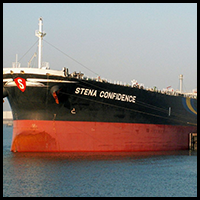Engineering Post Report
Pakistan’s sustainable economic development is dependent on a robust and low-cost transport and logistics sector. Enhanced export competitiveness is also contingent upon the efficient performance of the sector.
Quite obviously, the federal government is fully aware of the vital role the transport and logistic sector plays in development of the national economy and in improving the competitiveness in country’s exports. As such, it is committed to implement a comprehensive development initiative and modernizing the transport and logistic sector through a continuous process of reform supported by focused investments in all of its sub-sectors.
As for maritime linkage is concerned, national flag carrier Pakistan National Shipping Corporation (PNSC) is an important sub-sector of the transport and logistic sector of the country and its strength, working and performance is being briefly mentioned in the following paragraphs.
Two LR-1 tankers are the latest addition in the PNSC’s managed fleet namely:” “M.T. Bolan” and “M.T.Khairpur”. These additions have increased PNSC”s managed fleet deadweight tonnage to 831, 711 tons, which is the largest in the history. The new induction of oil tankers in managed fleet is not only catering the demand of Motor Gasoline transportation but also imparting modern technological advancements on board. These inductions are also making appreciable contribution towards curtailing reliance on foreign-charted vessels for oil transportation, encountering the existing and foreseeable external challenges as well as gearing up for country’s current and future economic challenges.
According to the facts and figures available, PNSC has achieved substantial growth in revenue earning of 35 per cent from Rs 1272 million to Rs 1717 million in managed bulk carrier segment through its managed vessels.
The present government has encouraged the use of alternative energy, which is cos-effective as well as environment friendly, as compared to furnace oil. Restrictions were imposed sometime back on import of furnace oil resulting in energy shift towards inexpensive Liquefied Natural Gas (LNG), which had hampered the operational revenue of the PNSC through foreign flag tankers chartering with a decline of 71 per cent from Rs 1690 million to Rs 491 million . Likewise, there was also decline of 7 per cent from Rs 1410 million to Rs 1317 million in slot charter segment, which was also primarily due to the reduction in the import of public sector cargoes.
PNSC current fleet comprises of 11 vessels (4 Aframax tankers, 2 LR-1 tankers and 5 bulk carriers) with a total deadweight (DWT) capacity of 831,711 tons, all manufactured by Japan and Korea, and is contributing significantly to Pakistan’s imports and export volumes whereas on the other hand is operating world-wide and earning precious and earning much needed foreign exchange towards the public exchequer.
Vessels are named MT Quetta, MT Lahore, MT Karachi, MT Shalamar, MT Bolan and MT Khairpur and buil carriers are M.V. Chitral, M.V. Malakand, M.V. Hyderabad, M.V.Sibi and M.V. Multan.
PNSC fleet, quite interestingly, comprised 14 vessels in 2000-01 with deadweight of 243802 tons, 15 in 2005-06 with deadweight of 636182 tons, sharply declining to 10 in 2009-10 with deadweight of 633273 tons, 9 during 2011-12 to 2017-18 with deadweight averaging around 681806 tons and going up to 11 with latest addition two in 2018-18 increasing deadweight carrying capacity to all time high at 831711 tons.
This is not all. Historically speaking, there were good times some decades back when the national flag carrier fleet comprised ships of different categories in 50s and 70s.
PNSC had scrapped as many as 10 vessels from time to time due to varying reasons, sold 4 vessels in 2009 to Blue Seas Marine and another 2 to Cheer Traders China another time while one had sank way back in 1989 nearby cities of Plymouth, Bournemouth and Cardiff in strong typhoon though all crew was rescued by the Royal Air Force.
As for future development plans are concerned to keeping moving onwards the the changing times and coping with national and international demands and requirements, PNSC has chalked out comprehensive Fleet Development Programme (FDP) which has been divided into short, medium and long terms.
Besides acquiring two LR-1 product tankers in the short term during last financial year which have boosted PNSC’s carrying capacity and thus also contributing towards increasing its revenue generation, in the medium term the national shipping carrier intends to expand its dry bulk and liquid fleet and also intended to get into transportation of LNG and LPG business. However, in the long term, the ultimate objective of the Corporation is to enhance and contain deadweight carrying capacity of over 1.5 million tons by 2025.






